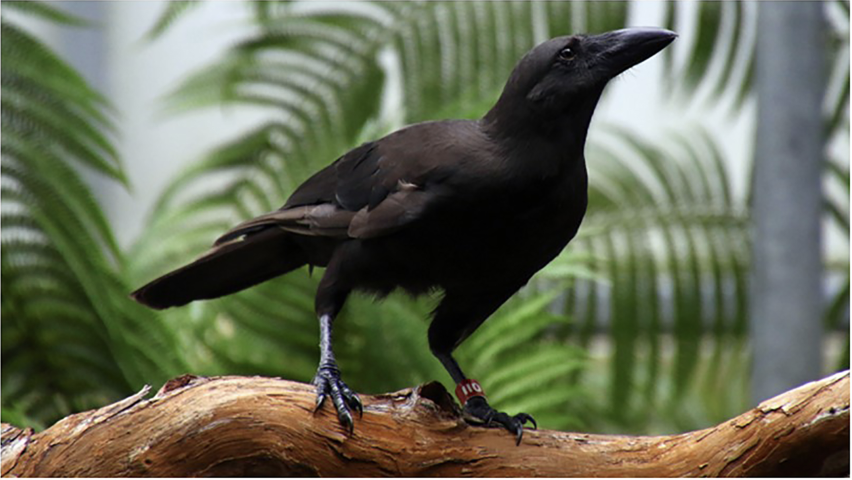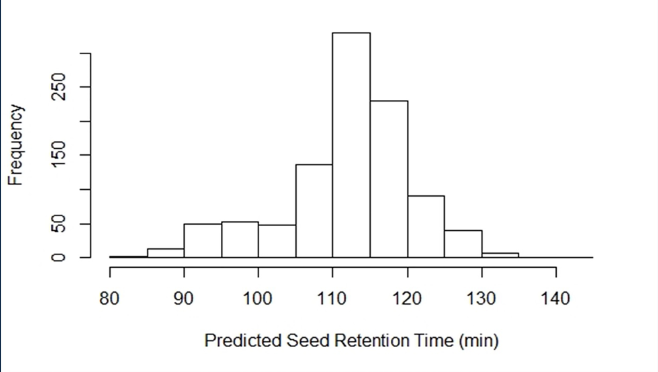Importance of Experiment Replication in Understanding Distribution of 'Alalā Seed Retention Time
Seed Dispersal in Hawaiian Forests
Plants in Hawaii's forest areas depend on avian seed dispersers to distribute their seeds. However, due to extinction only a few native birds still exist, so the role of seed dispersal has also been taken on by introduced, non-native birds. Reintroducing native Hawaiian birds, like the 'Alalā, to these areas will facilitate the dispersal of native seeds and help to restore native vegetation.
- Hawaiian forests suffer damages from introduced plants and animals that trample or graze on vegetation
- Introduced birds disperse both native and non-native seeds, which helps the spread of invasive plants
- Forest restoration depends on dispersers that disperse native plants
- The 'Alalā is a disperser of native plants and has the potential to rebuild native Hawaiian forests
- The 'Alalā was extinct in the wild, but reintroductions from captivity began in 2016 to help with the dispersal of native seeds

What is Retention Time?
- The amount of time the seed stays in the gut of a bird before the bird disperses it.
- Seed retention time can be estimated from body mass
- Knowing the seed retention time, along with estimated flight paths of the 'Alalā, will allow us to estimate the distribution of seeds dispersed by the 'Alalā
Research Question
How does experiment replication increase our understanding of the distribution of 'Alalā seed retention time?
Methods
- Make a data set for the body mass and corresponding seed retention times of 55 unique bird species
- Randomly select 47 species ('train' data) and make a generalized linear model (GLM) that predicts seed retention time from body mass
- Repeat step 2. 1000 times. This will result in 1000 different GLMs79
- Input Body Masses
- Input the body of mass of the 'Alalā into the GLMs to predict the seed retention time
- Input the body masses from the remaining species that were not selected ('test' data) into the 1000 GLMs to predict seed retention times
- Perform Calculations
- Plot the 1000 predicted seed retention times on a histogram
- Find the root mean square error (rmse) between the predicted seed retention times. This results in 1000 rmse values
Findings
- Seed retention times ranged from 84.54 - 140.36 min
- Root mean square error ranged from 4.97 - 65.98 min

- Many predicted values proved a big picture estimate of how the seed retention times in a population of 'Alalās are distributed. One prediction alone does represent this distribution
- The range of root mean square error values illustrates that if only one experiment had been done, the error of that single model could have varied greatly depending on the chosen samples
- Replication allows for a range of predictions and a range of errors to be accounted for
Moving Forward
Further research can be done to estimate the flight paths of the 'Alalā by tracking the flight paths of reintroduced members of the species. This information, combined with their estimated seed retention time, will allow us to visualize the distribution of the seeds they disperse and therefore, the positive impact the 'Alalā has on native forest restoration.
References
- Loope, L. L., Hamann, O., & Stone, C. P. (1988). Comparative Conservation Biology of Oceanic Archipelagoes. (Cover story). BioScience 38(4), 272-282.
- 'Alalā Project. (2020). Retrieved from https://dlnr.hawaii.gov/alalaproject/
- Foster, J. T., & Robinson, S. K. (2007). Introduced Birds and the Fate of Hawaiian Rainforests. Conservation Biology, 21(5), 1248-1257.
- Fortini, L. B., Vorsino, A. E., Amidon, F. A., Paxton, E. H., & Jacobi, J. D. (2015). Large-Scale Range Collapse of Hawaiian Forest Birds Under Climate Change and the Need 21st Century Conservation Options. PLoS ONE, 10(10), 1-22.

